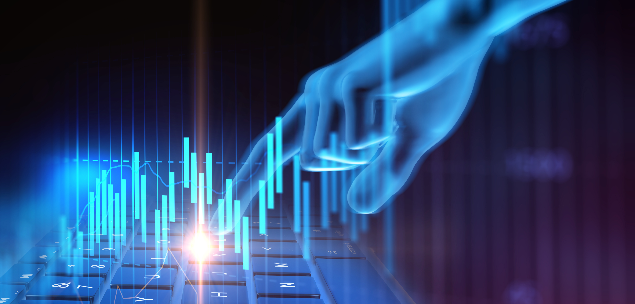Information technologies are accelerating at an exponential rate, ushering in the fourth industrial revolution. This is a digital revolution and the pace of change is unprecedented. This revolution incorporates machine learning (think parallel processing and neural networks) and the concept of self-assembly or self-programmability. As technologies continue to advance, they accelerate the progress of other technologies, and so on, and so on.
To illustrate this, we can look at the evolution of disruptive technologies. In 2016, everyone was excited about the promise of 3-D printing. Now, we’re gearing up for 4-D printing, an emerging technology that will enable us to print objects that reshape or assemble themselves on-the-fly, based on intelligent data. To make this level of self-assembly a reality, we will need dynamic and agile systems. Enter the Internet of Things (IoT) as the digital platform of the future. But the potential of the IoT has evolved into the “Intelligence of Things”. Even Uber, the popular ride sharing app, has advanced its concept of on-demand travel to incorporate a fleet of electric aircrafts (called “Elevate”) to lift us up and out of the chaos of gridlocked ground traffic (yes, just like in “The Jetsons”).
The old approach to technology development moved linearly at the speed of human coders. The new model progresses exponentially at the speed of data, intelligence and self-assembly. Based on this new model, here are my top picks for technology trends that will dominate in 2017:
1. AI and Advanced Machine Learning: The Automatic Enterprise
Thanks to parallel processing, big data, cloud technology, and advanced algorithms, Artificial Intelligence (AI) and machine learning are becoming more powerful. As tech giants like Google, Facebook, and Apple invest in AI, it is becoming more mainstream. People already interact with virtual personal assistants (PAs) like Apple’s Siri® and Google Assistant®. Facebook successfully created technology to identify people’s faces with its facial recognition app. Recommendation engines and robo-advisors are becoming a reality in financial services. And robotic butlers are delivering room service in hotels around the world. The analysts are jumping on board, with Forrester predicting that investments in AI will grow 300% in 2017 and Gartner forecasting that 50% of all analytical interactions will be delivered via AI in the next three to five years. These are impressive numbers. But how will these investments pay off for the enterprise? Are computers really more intelligent than people?
Many jobs will disappear through automation and others will change significantly as the enterprise becomes more automated and intelligent. Over the next few years, some of us could be answering to robo-bosses. From a productivity perspective, we spend a third of our time in the workplace collecting and processing data—AI could all but eliminate this work. Every job in every industry will be impacted by machine learning. The upside? The opportunity to think exponentially means that the potential applications for these technologies are limitless. For businesses, understanding cognitive systems, big data analytics, machine learning technology, and AI—and how to leverage them—will be critical for survival. In the short term, these technologies will give organisations faster access to sophisticated insights, empowering them to make better decisions and act with agility to outpace their competitors.
2. The Year of Intelligent Things: A Smarter You in 2017
The capability of smart machines increases substantially as they are infused with standalone intelligence.
AI and machine learning will be embedded into everyday things like appliances, cars, sensors and drones. Even our thermostats will continue to become more intelligent; they will not only learn our heating and cooling preferences, but also analyse factors like on- or off-peak use, weather forecasts, and previous consumption patterns to give us recommendations to reduce utilities bills.
This intelligence will be coded into apps. These apps will be driven by data and context, they will synthesise vast amounts of information, learn our behaviors, and react and adapt in real time to deliver relevant and personalised outcomes. Whether they make us more productive at work, optimise our health, or manage energy and utilities consumption in our homes, intelligent things and apps have the power to direct our actions and influence our interactions to help us make better decisions and, ultimately, improve our quality of life.
3. The Evolving Mesh App and Service Architecture
With all the apps, networks, devices, and channels, how do you make the experience seamless for the user? This is a question that will influence tech R&D in 2017.
The “digital mesh” refers to everything that is connected across digital ecosystems—from people to processes to things. As more services and apps connect across more channels and networks, the digital mesh is growing and as it does, it is fundamentally altering the user experience.
Consumers expect a seamless experience that flows across a shifting set of devices and channels, combining the physical and virtual. This kind of ambient user experience requires that the supporting platforms, technologies, and architectures must also change. Enter Mesh App and Service Architecture (MASA), a modern architecture that allows for modular, flexible, and dynamic solutions. MASA connects devices, apps, services, and other information sources in a consistent user experience across the digital mesh. It leverages cloud and server-less computing, containers and micro-services, and dynamically supports user needs as they interact with their technology and devices. MASA is an architectural shift that will require significant changes to enterprise infrastructure and R&D.
Whether you’re ready or not, the fourth industrial revolution is here. We are witnessing incredible breakthroughs in every industry, driven by disruptive innovation. And the possibilities for application are unlimited. To quote Sun Tzu: “In the midst of chaos, there is also opportunity.”
About the author
Mark Barrenechea is the CEO and CTO of OpenText, a global enterprise information management (EIM) software company

